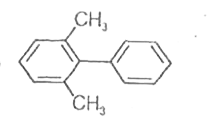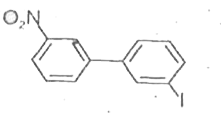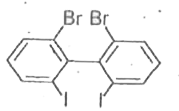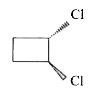A
B
C
D
Text Solution
AI Generated Solution
The correct Answer is:
|
Topper's Solved these Questions
HALOALKANES AND HALOARENES
AAKASH INSTITUTE ENGLISH|Exercise ASSIGNMENT SECTION -D|15 VideosView PlaylistHALOALKANES AND HALOARENES
AAKASH INSTITUTE ENGLISH|Exercise ASSIGNMENT SECTION - B|25 VideosView PlaylistGENERAL PRINCIPLES AND PROCESSES OF ISOLATION OF ELEMENTS
AAKASH INSTITUTE ENGLISH|Exercise Try Yourself|33 VideosView PlaylistHYDROCARBONS
AAKASH INSTITUTE ENGLISH|Exercise Assignment(Section - C) (Previous Years Questions)|60 VideosView Playlist
Similar Questions
Explore conceptually related problems
Knowledge Check
Similar Questions
Explore conceptually related problems
AAKASH INSTITUTE ENGLISH-HALOALKANES AND HALOARENES -ASSIGNMENT SECTION - C
- Identify A and predict the type of reactions
07:02
|
Play - Consider the reaction : CH(3)CH(2)CH(2)Br+NaCNrarrCH(3)CH(2)CH(2)CN+...
02:46
|
Play - Which of the following biphenyls is optically active?
05:44
|
Playing Now - Two possible stereostructures of CH(3)CHOH.COOH, which are optically a...
01:20
|
Play - In an S(N)1reaction on chiral centres, there is
04:28
|
Play - In which of the following compounds , the C - Cl bond ioniosation shal...
03:49
|
Play - What products are formed when the following compounds are treated with...
03:03
|
Play - CH2=CH2 + Br = Product , what is product?
01:07
|
Play - In the replacement reaction rarrC-I+MF rarr rarr C-F+MI The react...
01:14
|
Play - Which of the following compounds undergoes nucleophilic substitution r...
03:44
|
Play - Condiser the reactions, (i) (CH(3))(2)CH-CH(2)Broverset(C(2)H(5)OH)r...
04:31
|
Play - The correct order of increasing reactivity of C-X bond towards nucleop...
03:06
|
Play - Which one is most reactive towards S(N)1 reactions ?
07:28
|
Play - In the following reaction C(6)H(5)CH(2)Br underset(2.H(3)O)overset(1...
02:59
|
Play - Which of the following reactions is an example of nucleophilic substit...
02:07
|
Play - H(3)C-underset(CH(3))underset("| ")"CH"-CH-=CH(2)+HBrrarr(X) Here (...
02:57
|
Play - In a S(N^(2)) substitution reaction of the type R-Br+Cl^(-)overset("...
02:44
|
Play - If there is no rotation of plane polarized light by a compound in a sp...
03:04
|
Play - For the following: (a) I^(-) (b) Cl^(-) (c) Br^(-) The ...
03:33
|
Play - Which of the following undergoes nucleophilic substitution exclusively...
03:22
|
Play











